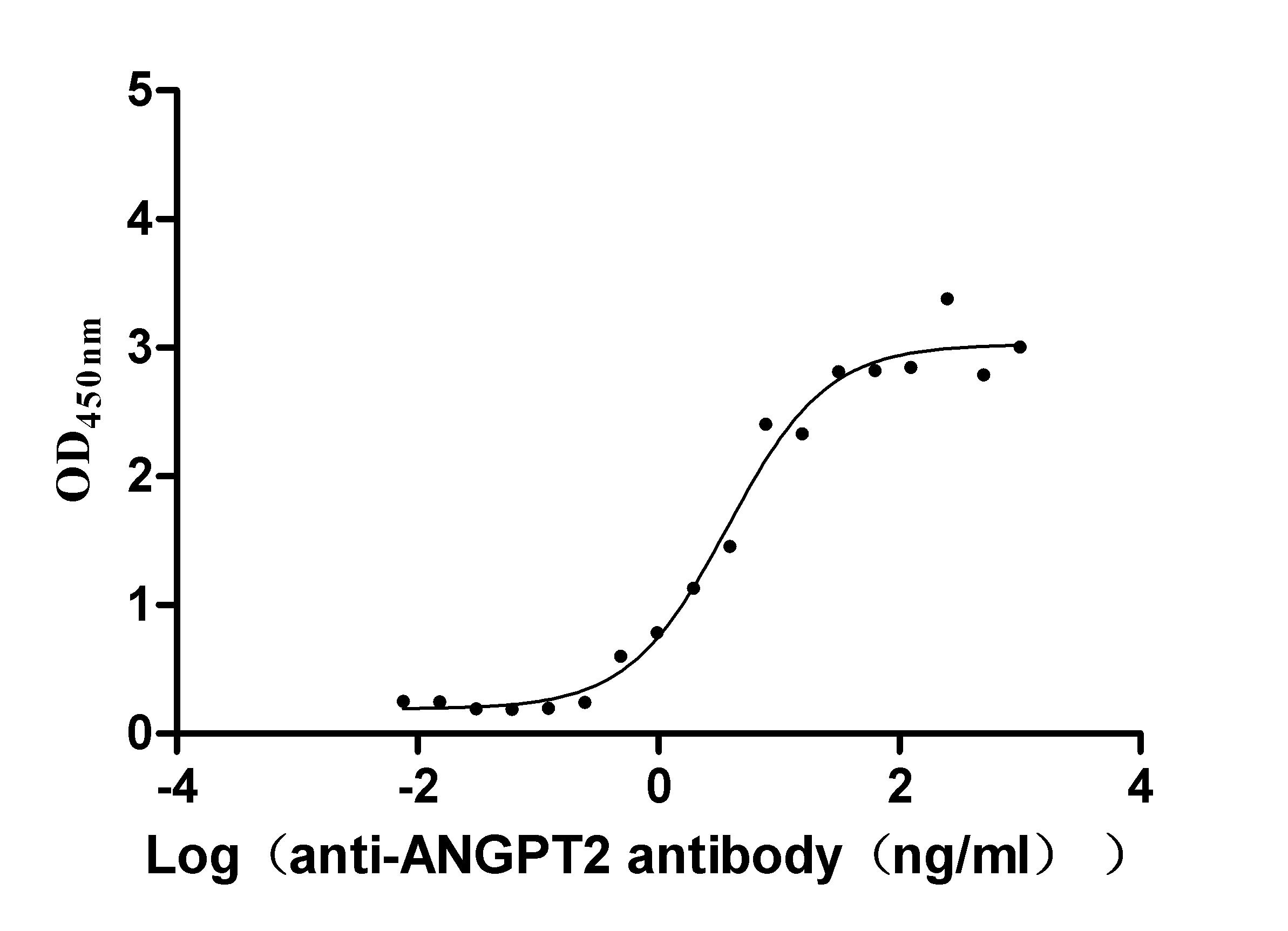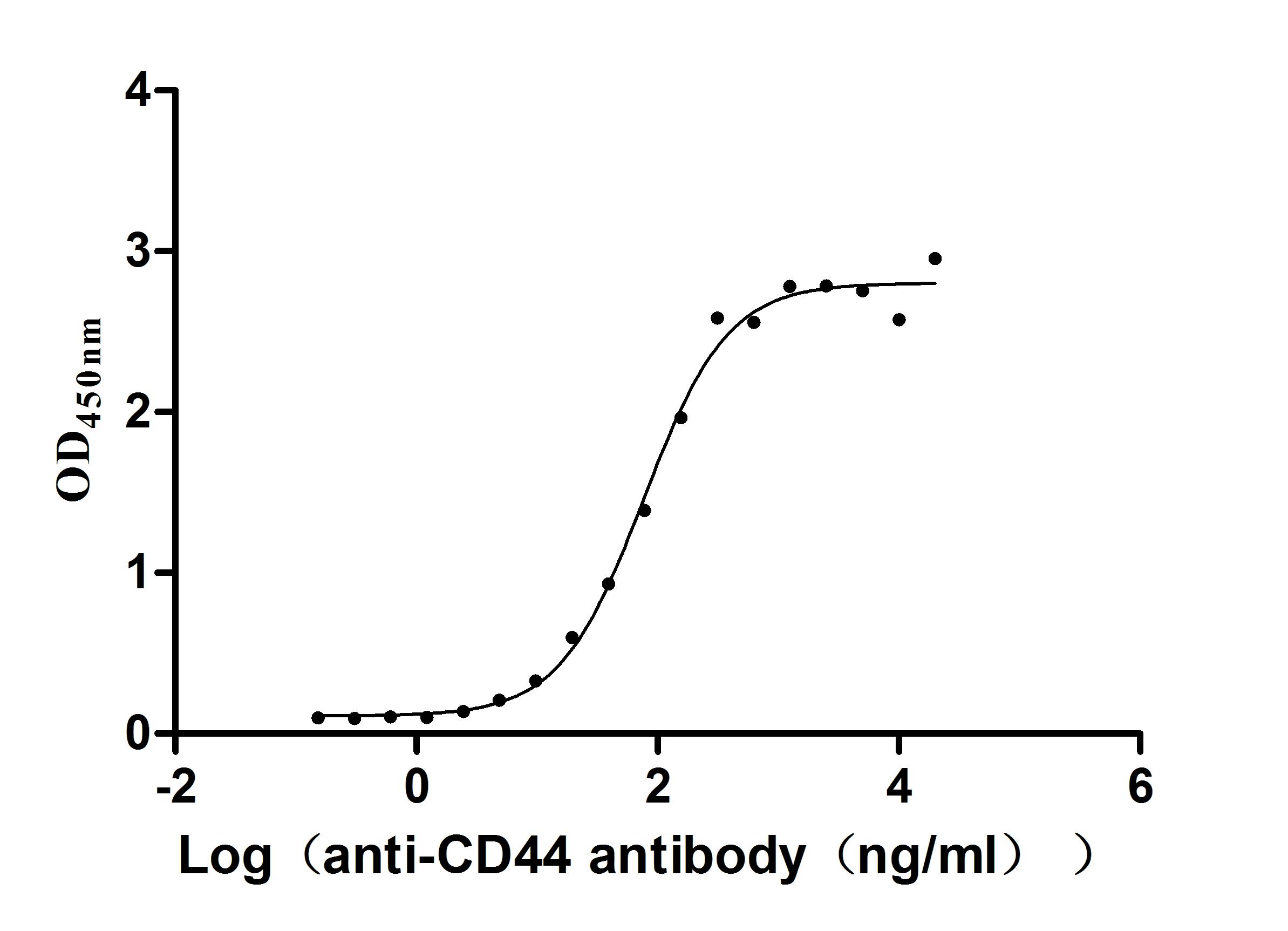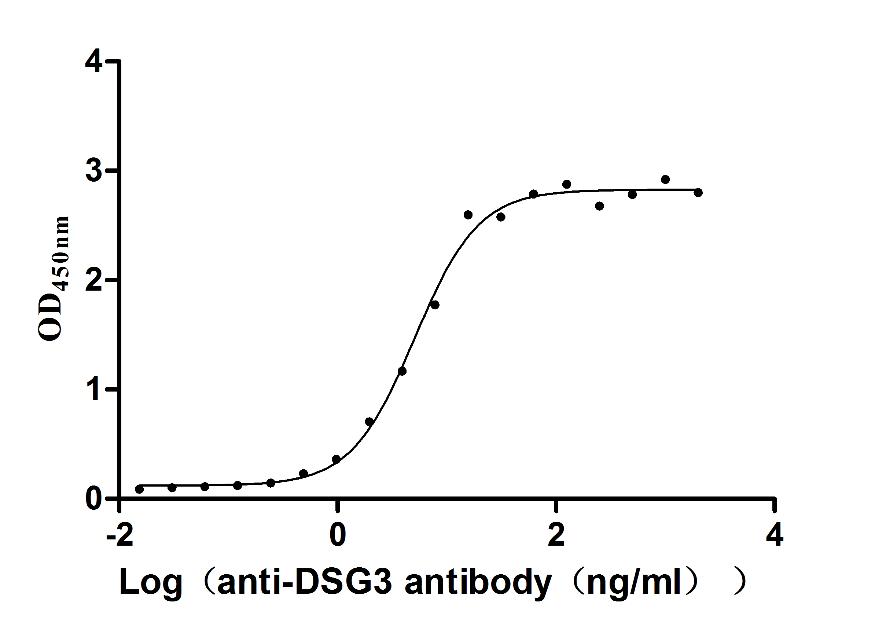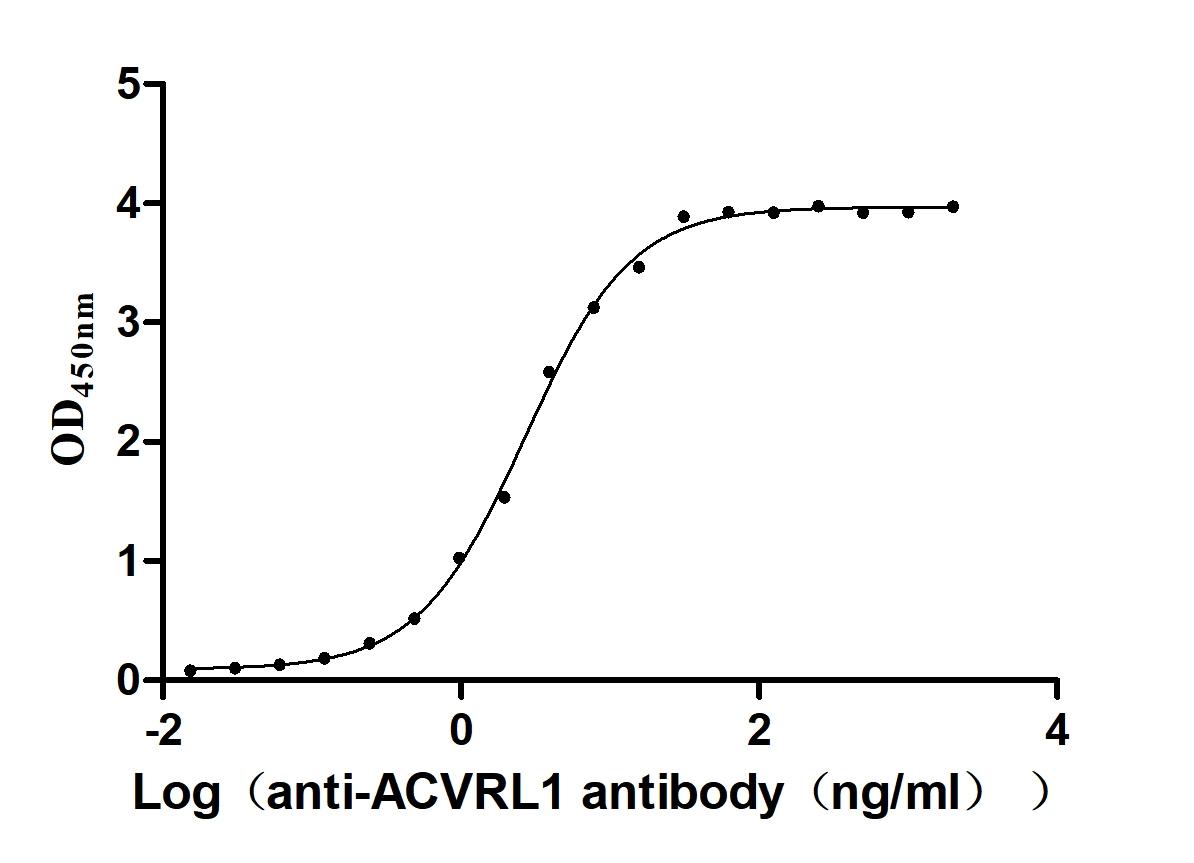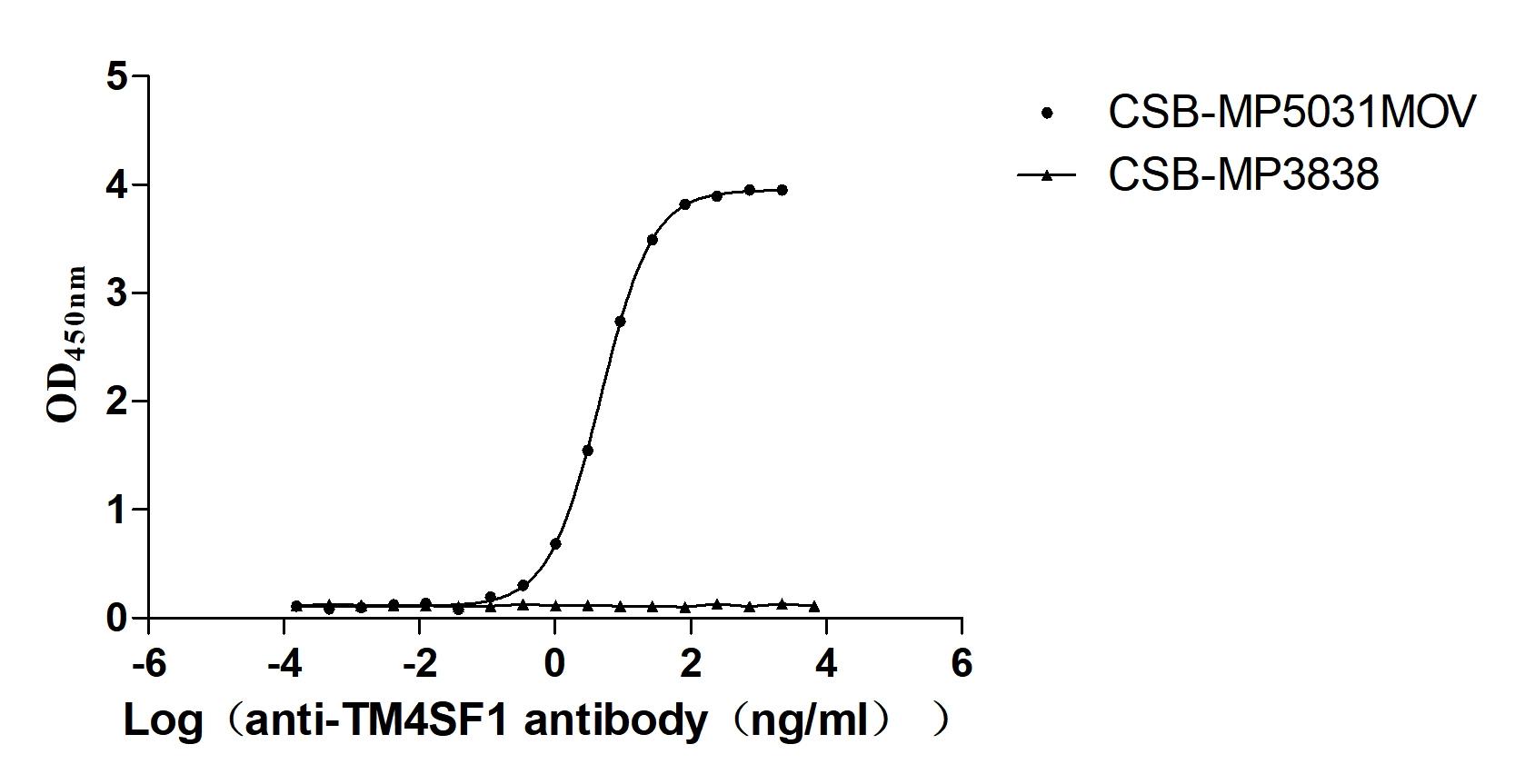Recombinant Human Ankyrin-2 (ANK2 ANKB)
-
中文名稱:
-
貨號:CSB-YP2392HU
-
規格:
-
來源:Yeast
-
其他:
-
中文名稱:
-
貨號:CSB-EP2392HU
-
規格:
-
來源:E.coli
-
其他:
-
中文名稱:
-
貨號:CSB-EP2392HU-B
-
規格:
-
來源:E.coli
-
共軛:Avi-tag Biotinylated
E. coli biotin ligase (BirA) is highly specific in covalently attaching biotin to the 15 amino acid AviTag peptide. This recombinant protein was biotinylated in vivo by AviTag-BirA technology, which method is BriA catalyzes amide linkage between the biotin and the specific lysine of the AviTag.
-
其他:
-
中文名稱:
-
貨號:CSB-BP2392HU
-
規格:
-
來源:Baculovirus
-
其他:
-
中文名稱:
-
貨號:CSB-MP2392HU
-
規格:
-
來源:Mammalian cell
-
其他:
產品詳情
-
純度:>85% (SDS-PAGE)
-
基因名:
-
Uniprot No.:
-
別名:Ankyrin-2; ANK-2; Ankyrin-B; Brain ankyrin; Non-erythroid ankyrin; ANK2 ANKB
-
種屬:Homo sapiens (Human)
-
蛋白標簽:Tag?type?will?be?determined?during?the?manufacturing?process.
The tag type will be determined during production process. If you have specified tag type, please tell us and we will develop the specified tag preferentially. -
產品提供形式:Liquid or Lyophilized powder
Note: We will preferentially ship the format that we have in stock, however, if you have any special requirement for the format, please remark your requirement when placing the order, we will prepare according to your demand. -
復溶:We recommend that this vial be briefly centrifuged prior to opening to bring the contents to the bottom. Please reconstitute protein in deionized sterile water to a concentration of 0.1-1.0 mg/mL.We recommend to add 5-50% of glycerol (final concentration) and aliquot for long-term storage at -20℃/-80℃. Our default final concentration of glycerol is 50%. Customers could use it as reference.
-
儲存條件:Store at -20°C/-80°C upon receipt, aliquoting is necessary for mutiple use. Avoid repeated freeze-thaw cycles.
-
保質期:The shelf life is related to many factors, storage state, buffer ingredients, storage temperature and the stability of the protein itself.
Generally, the shelf life of liquid form is 6 months at -20°C/-80°C. The shelf life of lyophilized form is 12 months at -20°C/-80°C. -
貨期:Delivery time may differ from different purchasing way or location, please kindly consult your local distributors for specific delivery time.Note: All of our proteins are default shipped with normal blue ice packs, if you request to ship with dry ice, please communicate with us in advance and extra fees will be charged.
-
注意事項:Repeated freezing and thawing is not recommended. Store working aliquots at 4°C for up to one week.
-
Datasheet :Please contact us to get it.
靶點詳情
-
功能:Plays an essential role in the localization and membrane stabilization of ion transporters and ion channels in several cell types, including cardiomyocytes, as well as in striated muscle cells. In skeletal muscle, required for proper localization of DMD and DCTN4 and for the formation and/or stability of a special subset of microtubules associated with costameres and neuromuscular junctions. In cardiomyocytes, required for coordinate assembly of Na/Ca exchanger, SLC8A1/NCX1, Na/K ATPases ATP1A1 and ATP1A2 and inositol 1,4,5-trisphosphate (InsP3) receptors at sarcoplasmic reticulum/sarcolemma sites. Required for expression and targeting of SPTBN1 in neonatal cardiomyocytes and for the regulation of neonatal cardiomyocyte contraction rate. In the inner segment of rod photoreceptors, required for the coordinated expression of the Na/K ATPase, Na/Ca exchanger and beta-2-spectrin (SPTBN1). Plays a role in endocytosis and intracellular protein transport. Associates with phosphatidylinositol 3-phosphate (PI3P)-positive organelles and binds dynactin to promote long-range motility of cells. Recruits RABGAP1L to (PI3P)-positive early endosomes, where RABGAP1L inactivates RAB22A, and promotes polarized trafficking to the leading edge of the migrating cells. Part of the ANK2/RABGAP1L complex which is required for the polarized recycling of fibronectin receptor ITGA5 ITGB1 to the plasma membrane that enables continuous directional cell migration.
-
基因功能參考文獻:
- Cell-autonomous adiposity results from increased cell surface GLUT4 due to ankyrin-B deficiency in humans and mice. PMID: 29133412
- The authors discovered that the entire 24 ankyrin repeats are inhibited by combinatorial and quasi-independent bindings of multiple disordered segments located in the ankyrin-B/G linkers and tails, suggesting a mechanistic basis for differential regulations of membrane target bindings by ankyrins. PMID: 28841137
- we support classification of Ankyrin-B p.L1622I as a "mild" loss-of-function variant that may confer arrhythmia susceptibility in the context of secondary risk factors including environment, medication, and/or additional genetic variation. PMID: 27298202
- Clinical manifestations of ANK2 variants may include QT prolongation and torsades de pointes, often precipitated by strenuous exercise or stress. PMID: 27005929
- Disruption of Ankyrin B and Caveolin-1 Interaction Sites Alters Na(+),K(+)-ATPase Membrane Diffusion PMID: 28988699
- Report disease-causing ANK2 variant localized to the membrane-binding domain resulting in reduced ankyrin-B expression and abnormal localization in a First Nations population with a high rate of long QT syndrome. PMID: 28196901
- VariousANK2mutations are associated with a wide range of phenotypes, including aLQTS, especially with ventricular fibrillation, representing "ankyrin-B" syndrome. PMID: 27784853
- Rare Variants in ANK2 Associated With Various Inherited Arrhythmia Syndromes. PMID: 27818464
- The identification and characterization of two functionally distinct ankyrin-B isoforms in heart provide compelling evidence that alternative splicing of the ANK2 gene regulates the fidelity of ankyrin-B interactions with proteins PMID: 26109584
- the structures of ANK repeats in complex with an inhibitory segment from the C-terminal regulatory domain and with a sodium channel Nav1.2 peptide, are reported. PMID: 25383926
- Gankyrin plays an essential role in estrogen-driven and GPR30-mediated endometrial carcinoma cell proliferation via the PTEN/PI3K/AKT signaling pathway. PMID: 23142288
- ankyrin-B linker suppresses activity of the ANK repeat domain through an intramolecular interaction, likely with a groove on the surface of the ANK repeat solenoid, thereby regulating the affinities between ankyrin-B and its binding partners PMID: 23569209
- Residues 63-73 of cdB3 is also essential for ankyrin binding. PMID: 22861190
- Ankyrin-B protein in heart failure: identification of a new component of metazoan cardioprotection. PMID: 22778271
- Reduced ankyrin-B expression or mutations in ankyrin 2 are associated with atrial fibrillation. PMID: 21859974
- Data show that DAnk2-binding is critical for beta spectrin function in vivo. PMID: 20573981
- The common genetic variation in the ANK2 gene is modified the physiological variability of the QT interval in the general population. PMID: 20031550
- The ankyrin-B C-terminal domain determines activity of ankyrin-B/G chimeras PMID: 11781319
- Loss-of-function (E1425G) mutation in ankyrin-B (also known as ankyrin 2), a member of a family of versatile membrane adapters, causes dominantly inherited type 4 long-QT cardiac arrhythmia in humans PMID: 12571597
- Data show that L1-cell adhesion molecule interactions with ankyrinB (but not with ankyrinG) are involved in the initial formation of neurites. PMID: 14657231
- An amphipathic alpha-helix in the divergent regulatory domain of ankyrin-b interacts with the molecular co-chaperone Hdj1/Hsp40. PMID: 15075330
- interaction between members of the ankyrin and beta-spectrin families previously established in erythrocytes and axon initial segments also occurs in neonatal cardiomyocytes with ankyrin-B and beta(2)-spectrin PMID: 15262991
- Quantitative analysis of erythrocyte membrane proteins revealed increase in ankyrin from patients with homozygous and heterozygous forms of beta-thalassemia. PMID: 15310273
- Genotype-negative LQTS patients with a single ANK2 variant displayed nonexertional syncope, U waves, sinus bradycardia, and extracardiac findings. PMID: 16253912
- study identified T to A transition mutation at position 4,603 in exon 40 resulting in substitution of arginine for tryptophan at amino acid residue 1,535 in regulatory domain of ankyrin-B; this novel mutation may be a cause of type 4 long QT syndrome PMID: 16864073
- Six novel mutations--4 in ANK2, 1 in KCNQ1, and 1 in SCN5A--were found in the patients with torsades de pointes. PMID: 17161064
- role of ankyrin-B-dependent protein interactions in regulating cardiac electrogenesis PMID: 17242276
- Ankyrin-B has a role in cardiac function, cardiac death and premature senescence PMID: 17940615
- ANK2 mutations were not found to directly cause long QT syndrome. PMID: 18052691
- the ankyrin-binding site is located on the cytoplasmic face of the InsP(3) receptor, thus validating the feasibility of in vivo ankyrin-InsP(3) receptor interactions. PMID: 18275062
- Ankyrin B modulates the function of Na,K-ATPase/inositol 1,4,5-trisphosphate receptor signaling microdomain PMID: 18303017
- ANK2 is subject to alternative splicing that gives rise to unique polypeptides with diverse roles in cardiac function. PMID: 18782775
- Exon organization and novel alternative splicing of the human ANK2 gene: implications for cardiac function and human cardiac disease PMID: 18790697
- dysfunction in AnkB-based trafficking pathways causes abnormal sinoatrial node (SAN) electrical activity and sinus node dysfunction. PMID: 18832177
顯示更多
收起更多
-
相關疾病:Long QT syndrome 4 (LQT4)
-
亞細胞定位:Cytoplasm, cytoskeleton. Membrane. Cytoplasm, myofibril, sarcomere, M line. Apical cell membrane. Cell membrane. Cell junction, synapse, postsynaptic cell membrane. Early endosome. Recycling endosome. Lysosome. Mitochondrion. Cytoplasm, myofibril, sarcomere, Z line. Cell membrane, sarcolemma, T-tubule.
-
組織特異性:Present in plasma membrane of neurons as well as glial cells throughout the brain. Expressed in fetal brain and in temporal cortex of adult brain. Also expressed in the inner segments of rod photoreceptors in retina.
-
數據庫鏈接:
Most popular with customers
-
Recombinant Human Claudin-18.2 (CLDN18.2)-VLPs (Active)
Express system: Mammalian cell
Species: Homo sapiens (Human)
-
Recombinant Dog Angiopoietin-2 (ANGPT2) (Active)
Express system: Mammalian cell
Species: Canis lupus familiaris (Dog) (Canis familiaris)
-
Recombinant Macaca fascicularis CD44 antigen (CD44), partial (Active)
Express system: Mammalian cell
Species: Macaca fascicularis (Crab-eating macaque) (Cynomolgus monkey)
-
Recombinant Human Desmoglein-3 (DSG3), partial (Active)
Express system: Baculovirus
Species: Homo sapiens (Human)
-
Recombinant Human Serine/threonine-protein kinase receptor R3 (ACVRL1), partial (Active)
Express system: Baculovirus
Species: Homo sapiens (Human)
-
Recombinant Macaca fascicularis Transmembrane 4 L6 family member 1 (TM4SF1)-VLPs (Active)
Express system: Mammalian cell
Species: Macaca fascicularis (Crab-eating macaque) (Cynomolgus monkey)


-AC1.jpg)
